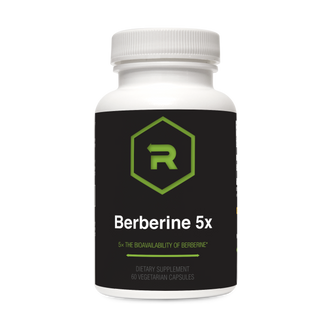DEXA for Body Composition: The Gold Standard in 2025?
Understanding your body composition—how much muscle, fat, and bone you carry—is one of the most accurate ways to assess metabolic health and progress in weight loss or fitness programs. While scale weight alone tells a limited story, body composition testing goes much deeper. In 2025, several modalities exist to assess body composition, but one stands out above the rest: Dual-Energy X-ray Absorptiometry, better known as DEXA.
In this in-depth post, we’ll explore what DEXA scans reveal, how they work, how they compare to other technologies like CT, MRI, InBody, BIA, Bod Pod, and hydrostatic weighing—and whether it’s worth the investment for your health journey.
What Is a DEXA Scan?
DEXA (or DXA) stands for Dual-Energy X-ray Absorptiometry, a medical imaging technology originally developed to measure bone mineral density. However, it is now widely used to evaluate body composition with high precision.
A DEXA scan provides:
-
Total and regional fat mass
-
Lean tissue mass
-
Bone mineral content
-
Visceral fat (VAT) estimates
-
Body fat percentage
-
Asymmetry in muscle distribution
Unlike other methods, DEXA offers not only whole-body composition data but also regional analysis—for example, comparing fat and muscle in your arms, legs, and trunk separately.
How Does DEXA Work?
DEXA uses two low-dose X-ray beams that pass through the body at different energy levels. The degree to which the tissues absorb or attenuate these beams varies:
-
Bone absorbs more X-rays due to its density.
-
Fat absorbs less.
-
Lean tissue (muscle) absorbs somewhere in between.
By analyzing the differential absorption, the DEXA system mathematically reconstructs a detailed body composition profile.
The scan takes about 6–10 minutes, involves minimal radiation exposure, and requires no preparation—just lie flat, relax, and stay still.
Why Body Composition Matters More Than Weight
Many people fixate on weight loss, but body composition gives a far more meaningful picture. For example:
-
You may lose 10 lbs of fat and gain 5 lbs of muscle—the scale changes only 5 lbs, but your metabolic health improves significantly.
-
Two individuals with the same BMI could have vastly different fat and muscle distributions, leading to different health outcomes.
A DEXA scan allows patients and practitioners to:
-
Monitor muscle retention during fat loss
-
Evaluate sarcopenia (age-related muscle loss)
-
Track changes in visceral fat
-
Personalize training and nutrition strategies
How DEXA Compares to Other Body Composition Methods
Let's break down how DEXA stacks up against other commonly used modalities in 2025.
1. CT (Computed Tomography)
How it works:
CT uses a series of X-rays to create cross-sectional images of the body. It can precisely quantify visceral adipose tissue (VAT) and organ-specific fat deposits.
Pros:
-
Extremely accurate for visceral fat
-
Great for research applications
-
Visualizes internal organs
Cons:
-
High radiation exposure
-
Expensive
-
Not practical for routine use
DEXA vs. CT:
While CT provides slightly more precision for visceral fat, DEXA provides a safer, lower-cost alternative that still includes VAT estimates.
2. MRI (Magnetic Resonance Imaging)
How it works:
MRI uses magnetic fields and radio waves to create detailed images of soft tissues. It can map muscle, fat, and even intramuscular fat infiltration.
Pros:
-
No radiation
-
Extremely detailed imaging
-
Useful for muscle quality assessment
Cons:
-
Expensive
-
Time-consuming
-
Not ideal for total-body composition unless part of a research study
DEXA vs. MRI:
MRI is superior in muscle quality analysis and spotting intramuscular fat but is overkill for general body comp tracking. DEXA is faster, more accessible, and still quite accurate.
3. BIA (Bioelectrical Impedance Analysis)
How it works:
BIA sends a small electrical current through the body. Since fat and muscle conduct electricity differently, it estimates body composition.
Pros:
-
Low cost
-
Fast and non-invasive
-
Available in consumer devices
Cons:
-
Accuracy varies with hydration, food, menstrual cycle
-
Over- or underestimates in athletic or obese individuals
-
Not standardized between devices
DEXA vs. BIA:
DEXA is significantly more accurate and not influenced by hydration or food intake. BIA is fine for rough estimates, but not ideal for serious body comp tracking.
4. InBody (Advanced BIA)
How it works:
InBody machines are a more sophisticated form of BIA. They segment body parts and use multi-frequency impedance for improved accuracy.
Pros:
-
Quick and user-friendly
-
Somewhat more accurate than traditional BIA
-
Gives segmental analysis
Cons:
-
Still influenced by hydration
-
Not as precise as imaging modalities
DEXA vs. InBody:
InBody is great for gyms or high-frequency tracking, but DEXA remains superior in accuracy, bone density measurement, and visceral fat detection.
5. Hydrostatic Weighing
How it works:
Also known as underwater weighing, this method determines body density by comparing weight on land vs. submerged in water.
Pros:
-
Historically considered a gold standard
-
Good estimate of body fat %
Cons:
-
Requires full submersion
-
Uncomfortable for many
-
Doesn’t account for bone density or fat location
DEXA vs. Hydrostatic:
DEXA is easier, quicker, more detailed, and doesn’t require getting wet. Hydrostatic weighing is falling out of favor due to its impracticality.
6. Bod Pod (Air Displacement Plethysmography)
How it works:
Uses air displacement to measure body volume and density. The subject sits in a sealed chamber for 2–5 minutes.
Pros:
-
Quick and non-invasive
-
No water immersion required
Cons:
-
Expensive equipment
-
Sensitive to clothing, posture, and hair
-
Less accurate for very lean or obese individuals
DEXA vs. Bod Pod:
While Bod Pod is a solid tool, DEXA offers more comprehensive data and less error from environmental variables.
Advantages of DEXA for Body Composition
✔ High Accuracy: Considered the clinical gold standard for non-invasive body composition.
✔ Regional Analysis: Track fat and muscle in specific limbs, trunk, and pelvis.
✔ Visceral Fat Estimate: Valuable for assessing metabolic risk.
✔ Bone Density Included: Dual purpose for osteopenia and osteoporosis screening.
✔ Repeatable Over Time: Ideal for tracking progress across months or years.
✔ Low Radiation: Safer than CT while still imaging internal compartments.
✔ Quick & Comfortable: Whole scan takes less than 10 minutes with no need to remove clothing (just metal).
Disadvantages of DEXA
✘ Low but Present Radiation: Not ideal for frequent monthly scans.
✘ Cost: Typically $50–150 per scan and often not covered by insurance unless used for bone density.
✘ Limited Access: Not as common in rural areas or smaller clinics.
✘ Body Size Limits: Less suitable for individuals over ~350 lbs due to machine limits.
✘ Slight VAT Estimation Error: Less precise than MRI or CT for visceral fat.
What DEXA Scans Can Help You Achieve
-
Fat Loss Progress: See if weight loss is coming from fat or muscle.
-
Muscle Building: Track lean mass gains, especially in bodybuilders and athletes.
-
Injury Recovery: Evaluate asymmetries or atrophy.
-
Menopause & Aging: Monitor sarcopenia or osteoporosis risk.
-
Metabolic Risk: Track and reduce visceral fat—a strong marker for insulin resistance, cardiovascular disease, and inflammation.
How Often Should You Get a DEXA Scan?
For most people, every 3–6 months is ideal for meaningful tracking. More frequent scans (monthly) can be used during intense fat loss phases or when monitoring sarcopenia in older adults.
Who Should Consider a DEXA Scan?
-
Athletes and bodybuilders
-
Patients with obesity or metabolic syndrome
-
Women in perimenopause or postmenopause
-
Anyone doing a body recomposition program
-
Older adults concerned with bone and muscle loss
DEXA in Functional and Integrative Medicine
At clinics like Revolution Health & Wellness in Tulsa, DEXA is used not only to assess weight loss but to optimize overall body composition, track muscle-to-fat ratios, and guide peptide therapy, hormone optimization, and anti-aging protocols.
Pairing DEXA with lab testing (like fasting insulin, CRP, testosterone, or leptin) allows a truly comprehensive assessment of metabolic health and aging.
Final Thoughts: Is DEXA Worth It?
In 2025, DEXA is still the gold standard for comprehensive, practical body composition measurement. While MRI and CT may be slightly more precise for certain parameters, DEXA strikes the best balance between:
-
Accuracy
-
Safety
-
Affordability
-
Accessibility
-
Rich, actionable data
Whether you’re trying to lose fat, gain muscle, optimize hormones, or simply take control of your metabolic health, a DEXA scan provides the data-driven foundation you need.
References
-
Pietrobelli, A., et al. (1996). Dual-energy X-ray absorptiometry body composition model: Review of physical concepts. American Journal of Physiology-Endocrinology and Metabolism, 271(6), E941–E951.
-
Heymsfield, S. B., et al. (2015). Human body composition: Advances in models and methods. Annual Review of Nutrition, 35, 197–217.
-
Snijder, M. B., et al. (2005). Visceral fat and cardiovascular risk in older men and women: The Health ABC Study. Obesity Research, 13(3), 361–367.
-
Silva, A. M., et al. (2013). Accuracy of air displacement plethysmography in children and adults. Nutrition Research Reviews, 26(1), 56–69.
-
Andreoli, A., et al. (2009). Body composition assessment by dual-energy X-ray absorptiometry (DXA). La Clinica Terapeutica, 160(6), 447–451.
-
Thomas, E. L., et al. (2012). MRI for measurement of body fat. Journal of Magnetic Resonance Imaging, 35(5), 1125–1131.
-
Gibson, A. L., et al. (2008). Body composition assessment methods. Current Opinion in Clinical Nutrition and Metabolic Care, 11(5), 566–572.
-
Kyle, U. G., et al. (2004). Bioelectrical impedance analysis—Part I: Review of principles and methods. Clinical Nutrition, 23(5), 1226–1243.


